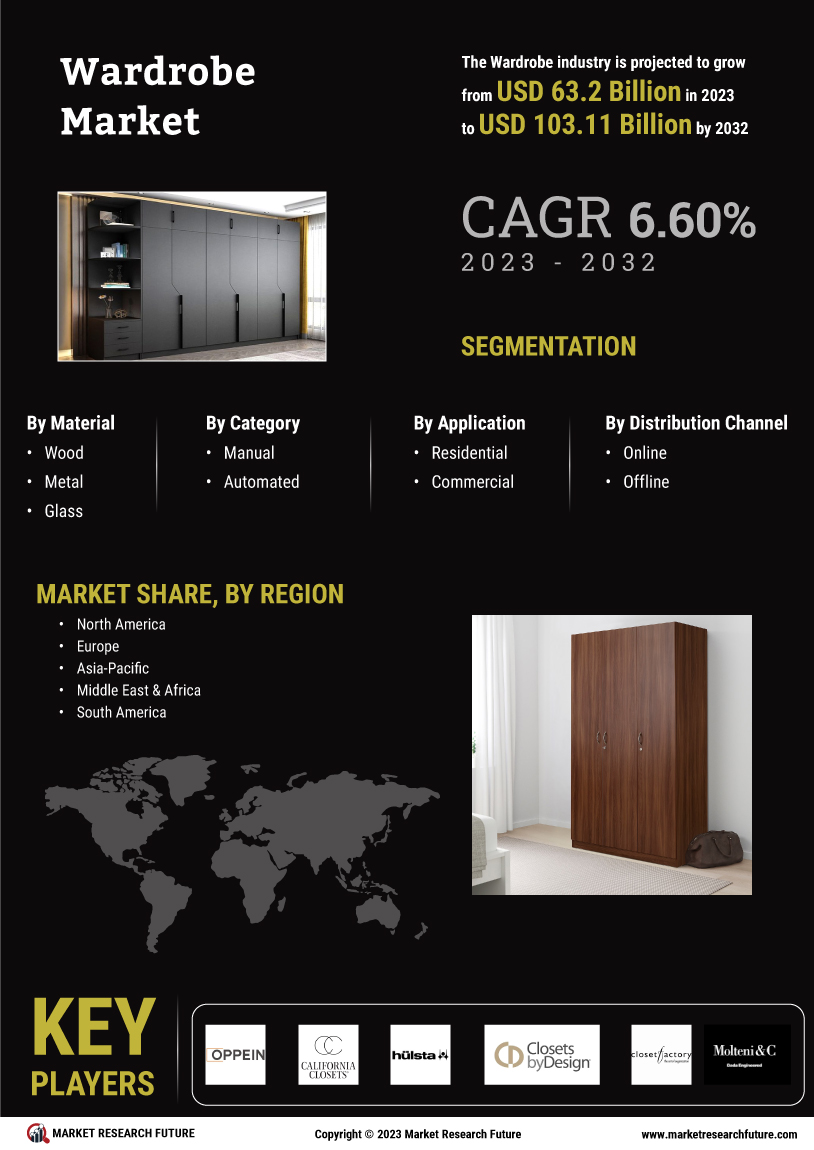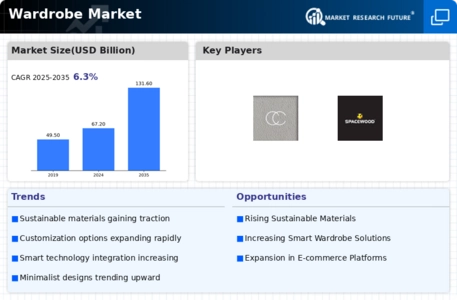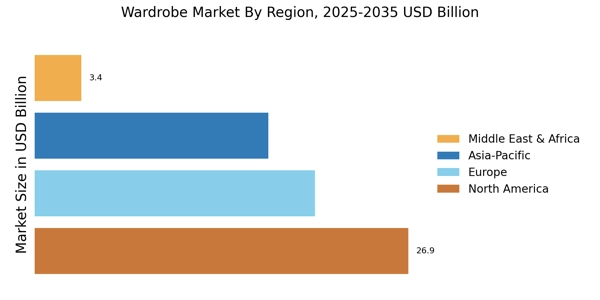Leading market players are investing heavily in research and development to expand their product lines, which will help the Wardrobe Market, grow even more. Market participants are also undertaking a variety of strategic activities to expand their footprint, with important market developments including new product launches, contractual agreements, mergers and acquisitions, higher investments, and collaboration with other organizations. To expand and survive in a more competitive and rising market climate, the Wardrobe industry must offer cost-effective items.
Manufacturing locally to minimize operational costs is one of the key business tactics used by manufacturers in the Wardrobe industry to benefit clients and increase the market sector. In recent years, the Wardrobe industry has offered some of the most significant advantages to interior designers and homeowners seeking stylish and efficient storage solutions. Major players in the Wardrobe Market, including Oppein Home Group (China), California Closets (U.S), Mobilspazio Srl (Italy), hülsta-werke Hüls GmbH & Co.
KG (Germany), Closets by Design, Inc. (U.S.), Closet Factory (U.S.), Molteni&C S.p.A (Italy), Lema s.p.a (Italy), Würfel (India), and Spacewood (India) are attempting to increase market demand by investing in research and development operations.
OPPEIN, established in 1994, has become the leading brand in China for kitchen and customized home decor, and it holds the distinction of being the world's largest manufacturer of cabinetry. Specializing in the design and production of top-quality kitchens, wardrobes, bespoke home furniture, bathroom products, interior doors, aluminum windows and doors, and home furnishings, OPPEIN offers comprehensive solutions for home decoration needs. The company achieved remarkable results in 2022, with a sales turnover of USD 3.24 billion, marking 29 consecutive years of growth.
OPPEIN also stands as the top performer in the cabinetry industry, producing and selling 6 million cabinet sets. Its products have a presence, exported to 118 countries and regions, contributing to a total market value exceeding CNY 100 billion (USD 15.3 billion) as of March 2021.
California Closets has established itself as a prominent player in the premium and luxury space management sector, over more than four decades. The company is known for delivering fully customized products and exceptional service, enabling people to optimize their living spaces and enhance their daily lives. Presently, California Closets boasts a network of 120 showrooms and over 700 designers throughout North America. In the coming five years, the company aims to expand its reach to encompass 300 showrooms and engage 1,600 designers. This growth will be achieved through a blend of company-owned outlets and franchise operations.
California Closets operates as a subsidiary of FirstService Brands, a leading provider of essential property services to both residential and commercial clients across North America, leveraging a portfolio of independently branded franchise systems and company-managed ventures.


















Leave a Comment